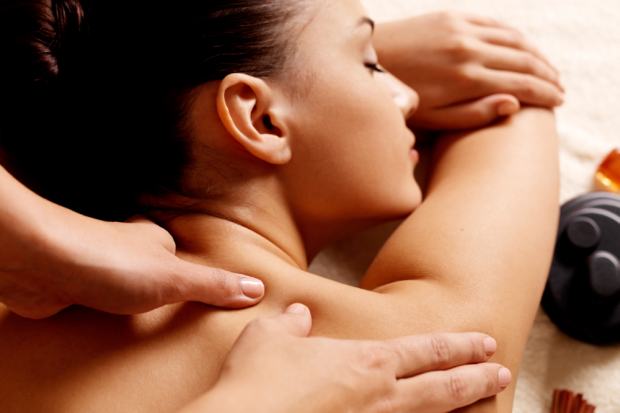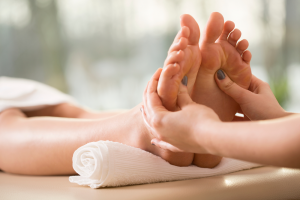Knot’s Landing How Myofascial Trigger Point Therapy Can Treat and Prevent Pain and Injuries
If muscle knots, chronic pain or an injury has affected your ability to move without hindrance, trigger point therapy (also called myofascial release) may be able to relieve your condition and return you to a normal way of life.
Trigger point therapy, sometimes called myofascial release or soft tissue bodywork, can be an effective way to naturally treat and prevent muscle pain and injuries caused by trigger points (muscle knots). But what exactly is trigger point therapy, and how can it get rid of tense muscles and chronic pain? Read on to find out.
What Are Trigger Points?
A trigger point is a tight, painful area within muscle tissue that can create back pain, neck pain, foot pain and other bodily pain. Commonly referred to as muscle knots, a trigger point can create pain in other parts of the body (called referred pain). For example, a knot in the back may create pain or numbness in the neck. Trigger points can be caused by injuries, improper or over training, sedentary lifestyle, sustained weight loading (heavy lifting, carrying babies, etc), poor posture, emotional stress and conditions like fibromyalgia and plantar fasciitis.
What Are The Different Types of Trigger Point Therapy, And How Do They Work?
Trigger point therapy can be achieved in a couple of different ways. The most popular form is trigger point massage, followed by trigger point injections and trigger point acupuncture. All three are able to help alleviate muscle pain in every part of the body, including the neck, shoulders, back, legs, and fascia area located on each foot and heel. The therapies can also be used to treat headaches, tennis elbow, carpal tunnel syndrome, pelvic pain, sciatic pain, tendinitis, arthritis, bursitis and disc pain, among other conditions.
YOU MAY ALSO LIKE:
Trigger Point Myofascial Release Massage
Trigger point massage aims to alleviate the source of pain by creating cycles of isolated pressure followed by release. Massage therapists usually have the patient engage in deep breathing for the duration of the massage. It is thought that receiving trigger point massage therapy on a regular basis can naturally manage pain and lead to sustained relief.
Trigger Point Injections
Painful muscle knots can also be reduced via trigger point injections (TPI), a treatment that involves a doctor inserting a needle containing a local anesthetic or saline directly into the muscle knots. Sometimes the injections include cortisoid. Immediate pain relief is normally experienced within a few minutes, and sustained relief can occur after just a brief course of treatment.
Trigger Point Acupuncture
Trigger point acupuncture is a treatment method that aims to alleviate the source of pain by generating repeated, involuntary twitching of the affected muscle. An acupuncturist uses a small, painless needle injected into the skin to achieve the muscle twitch, which often leads to immediate reduction of muscle tightness. Trigger point acupuncture is more aggressive and direct than traditional acupuncture, which involves the injection of several needles on various points of the body, and can lead to sustained relief with just a few sessions.
Success Rates of Myofascial Trigger Point Therapy
Everyone’s musculoskeletal system reacts to trigger point therapy differently, making it difficult to pinpoint its success rate. However, it usually takes between one and three massage therapy sessions, trigger point injections or acupuncture needling sessions to determine whether or not the therapy will work for each individual person. Signs of success include a reduction in pain and tightness of the muscle knots, as well as a feeling of wellness and relaxation in the neck, back, feet and other parts of the body.
Some things that will affect an individual’s rate of improvement include the type of injury, overall health, nutrition, quality of sleep, frequency of therapy, compliance with self-care and the presence of underlying health conditions like depression, anxiety, allergies and diabetes.
Notice concerning medical entries:
Articles having medical content shall serve exclusively for the purpose of general information. Such articles are not suitable for any (self-) diagnosis and treatment of individual illnesses and medical indications. In particular, they cannot substitute for the examination, advice, or treatment by a licensed physician or pharmacist. No replies to any individual questions shall be effected through the articles.






